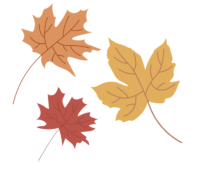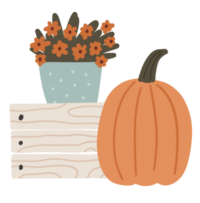Here’s a handy guide to prepping your home for fall. 
1. Check Your Heating System
When the temperatures drop, you’ll want your heating system to be in top shape. Whether you have a furnace, boiler, or heat pump, now’s the time to make sure everything is running smoothly.
- Schedule a Tune-Up: Having a professional inspect and service your heating system can help prevent breakdowns when you need it most.
- Change Your Filters: A fresh air filter helps your system run more efficiently and improves indoor air quality.
- Test Your Thermostat: Make sure your thermostat is working properly and consider upgrading to a programmable one to save on energy costs.
2. Seal Windows and Doors
Don’t let the cool autumn breeze sneak into your home! Drafts around windows and doors can lead to higher energy bills and a less comfortable living space.
- Check for Drafts: Run your hand around windows and doors to feel for any drafts. If you find any, use weatherstripping or caulk to seal the gaps.
- Inspect Window Screens: Swap out summer screens for storm windows if you have them, and make sure everything is securely in place to keep the cold out.
- Install Door Sweeps: Adding a door sweep can block drafts from sneaking in under doors.
3. Clean the Gutters
Falling leaves are beautiful, but they can also clog up your gutters if left unchecked. Clogged gutters can lead to water damage and even ice dams when the weather turns colder.
- Remove Leaves and Debris: Clear out your gutters and downspouts to ensure proper drainage. This helps prevent water from pooling around your foundation or leaking into your home.
- Inspect for Damage: Check your gutters for any cracks, loose brackets, or damage that could cause problems later on.
4. Inspect the Roof
Your roof is your home’s first line of defense against the elements, so it’s important to make sure it’s in good shape before fall and winter storms hit.
- Look for Missing or Damaged Shingles: Scan your roof for any shingles that are cracked, curled, or missing. These could allow water to seep in, leading to leaks and damage.
- Check Flashing and Seals: Make sure the flashing around chimneys, vents, and skylights is secure and free of gaps.
- Clean Off Debris: Remove any leaves, branches, or other debris that could trap moisture on your roof.
5. Prepare Your Yard 
Fall is the perfect time to get your yard ready for winter, which can help prevent potential hazards to your home.
- Trim Trees and Shrubs: Cut back any branches that are too close to your home, especially those near windows, siding, or power lines. This reduces the risk of damage from falling branches during storms.
- Rake Leaves: Clear leaves from your yard, especially from walkways and driveways, to prevent slippery surfaces when wet or frosty.
- Store Outdoor Furniture: Clean and store your outdoor furniture, grills, and garden tools before the cold weather hits to extend their life and prevent damage.
6. Test Smoke and Carbon Monoxide Detectors
With the increased use of heating systems, fireplaces, and space heaters in the fall, it’s crucial to ensure your smoke and carbon monoxide detectors are working properly.
- Test Your Detectors: Push the test button on all smoke and carbon monoxide detectors to make sure they’re functioning. Replace batteries if needed.
- Install New Detectors: If your detectors are more than 10 years old, it’s time to replace them with new ones.
7. Inspect Your Chimney and Fireplace
If you plan on using a fireplace to cozy up this fall, make sure it’s ready to safely warm your home.
- Schedule a Chimney Sweep: Have your chimney professionally cleaned and inspected to remove any soot or blockages.
- Check for Cracks: Look for any visible cracks or damage in your fireplace and chimney that could pose a safety risk.
8. Review Your Home Insurance Coverage
As you prepare your home for fall, it’s also a good time to review your home insurance policy. Renovations, new purchases, or changes in your home’s value could mean it’s time to adjust your coverage.
- Check for Coverage Gaps: Make sure your policy is up to date and that you’re covered for potential risks like storm damage or frozen pipes.
- Consider Umbrella Coverage: If you’ve made significant upgrades to your home, it might be worth exploring umbrella insurance to provide extra protection.
Preparing your home for fall is all about staying cozy and preventing unexpected surprises down the road. If you have any questions about your coverage or want to make sure your home is fully protected, give us a call or stop by our office. We’d love to help!
